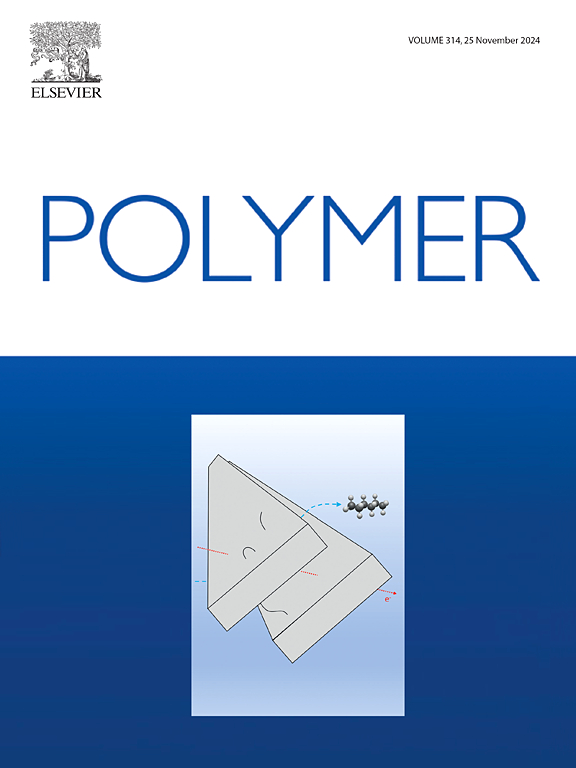Rational design of glycidyl azide polymer-based triblock copolymers for high-performance energetic thermoplastic elastomers
IF 4.1
2区 化学
Q2 POLYMER SCIENCE
引用次数: 0
Abstract
In aerospace applications, such as rockets and missiles, using thermoplastic elastomers (TPEs) in rocket propellants offers favorable properties that may allow them to replace traditional thermosetting elastomers. This study investigates the synthesis of energetic thermoplastic elastomers (ETPEs) with energetic characteristics, specifically focusing on synthesizing glycidyl azide polymer (GAP) ETPE and the effect of varying hard segment ratios on their physical properties. However, only the presence of azide side chains negatively impacts the mechanical properties of the ETPE and to address this issue, an ABA triblock copolymer synthesis approach is employed, utilizing poly (ε-caprolactone) (PCL) long linear chains to modify the original GAP, forming PCL-GAP-PCL ETPE. The introduction of PCL-GAP-PCL triblock copolymers significantly enhanced the mechanical properties of the resulting ETPE, providing substantial benefits for its use in specific environments. Furthermore, this study also investigates the effects of varying soft/hard segment ratios in the ETPE, suggesting that the subsequent incorporation of oxidizer fillers could yield favorable mechanical properties. Additionally, 2D infrared spectroscopy (2D-IR) was utilized to understand the effects of hydrogen bond formation and dissociation.


求助全文
约1分钟内获得全文
求助全文
来源期刊

Polymer
化学-高分子科学
CiteScore
7.90
自引率
8.70%
发文量
959
审稿时长
32 days
期刊介绍:
Polymer is an interdisciplinary journal dedicated to publishing innovative and significant advances in Polymer Physics, Chemistry and Technology. We welcome submissions on polymer hybrids, nanocomposites, characterisation and self-assembly. Polymer also publishes work on the technological application of polymers in energy and optoelectronics.
The main scope is covered but not limited to the following core areas:
Polymer Materials
Nanocomposites and hybrid nanomaterials
Polymer blends, films, fibres, networks and porous materials
Physical Characterization
Characterisation, modelling and simulation* of molecular and materials properties in bulk, solution, and thin films
Polymer Engineering
Advanced multiscale processing methods
Polymer Synthesis, Modification and Self-assembly
Including designer polymer architectures, mechanisms and kinetics, and supramolecular polymerization
Technological Applications
Polymers for energy generation and storage
Polymer membranes for separation technology
Polymers for opto- and microelectronics.
 求助内容:
求助内容: 应助结果提醒方式:
应助结果提醒方式:


